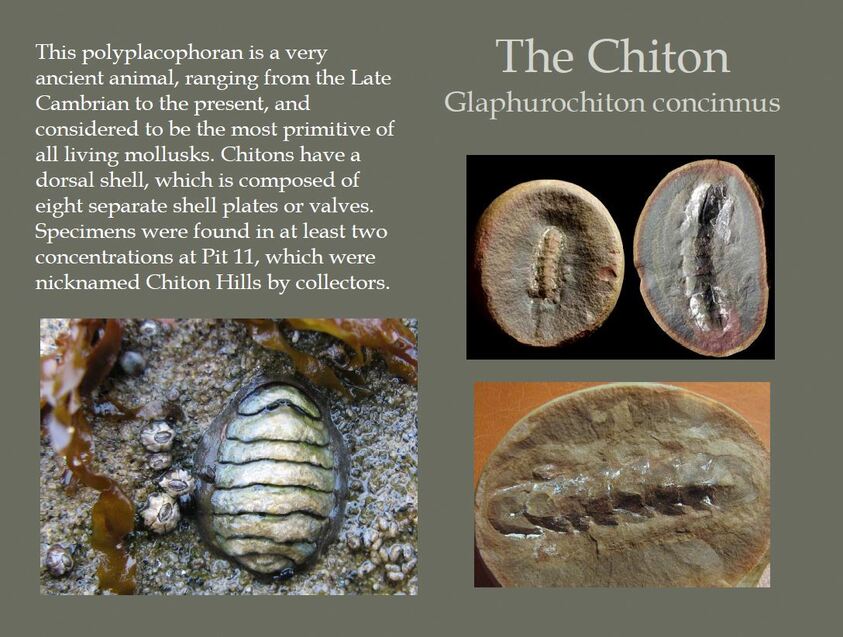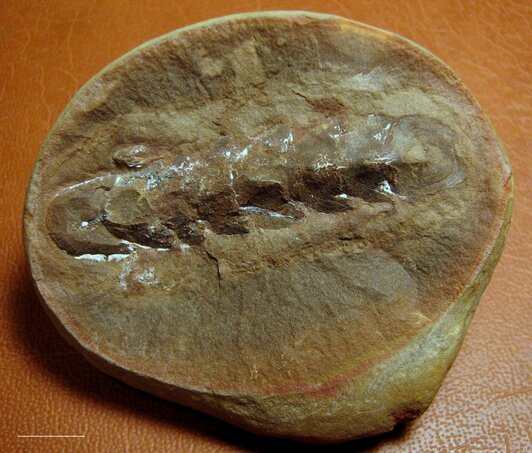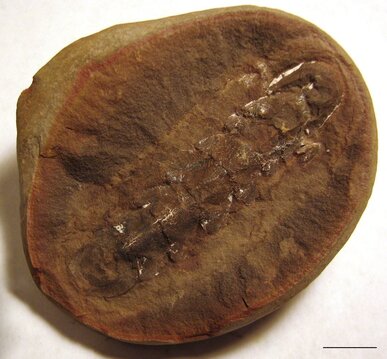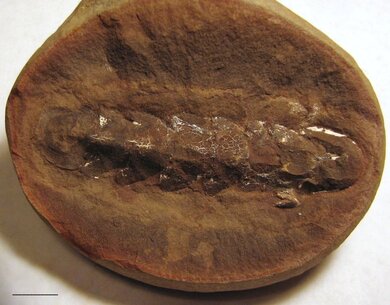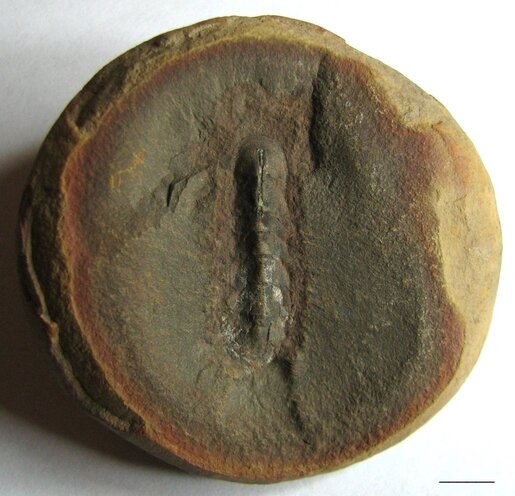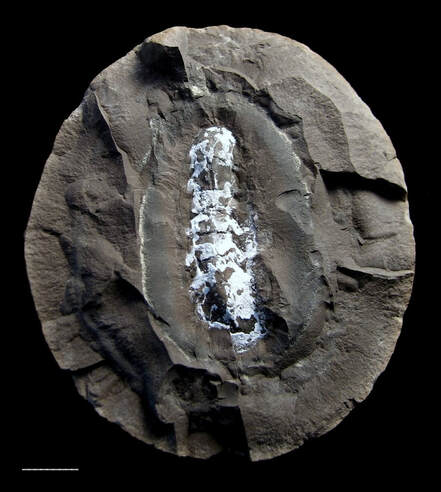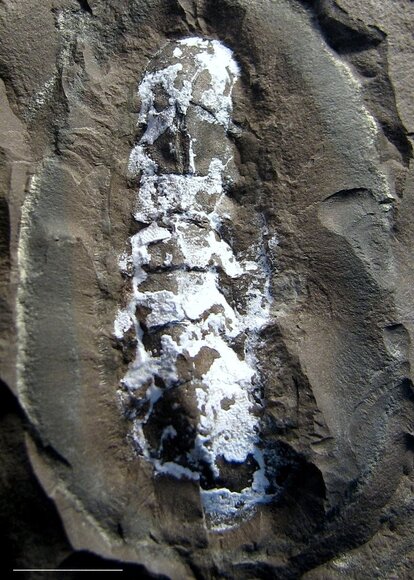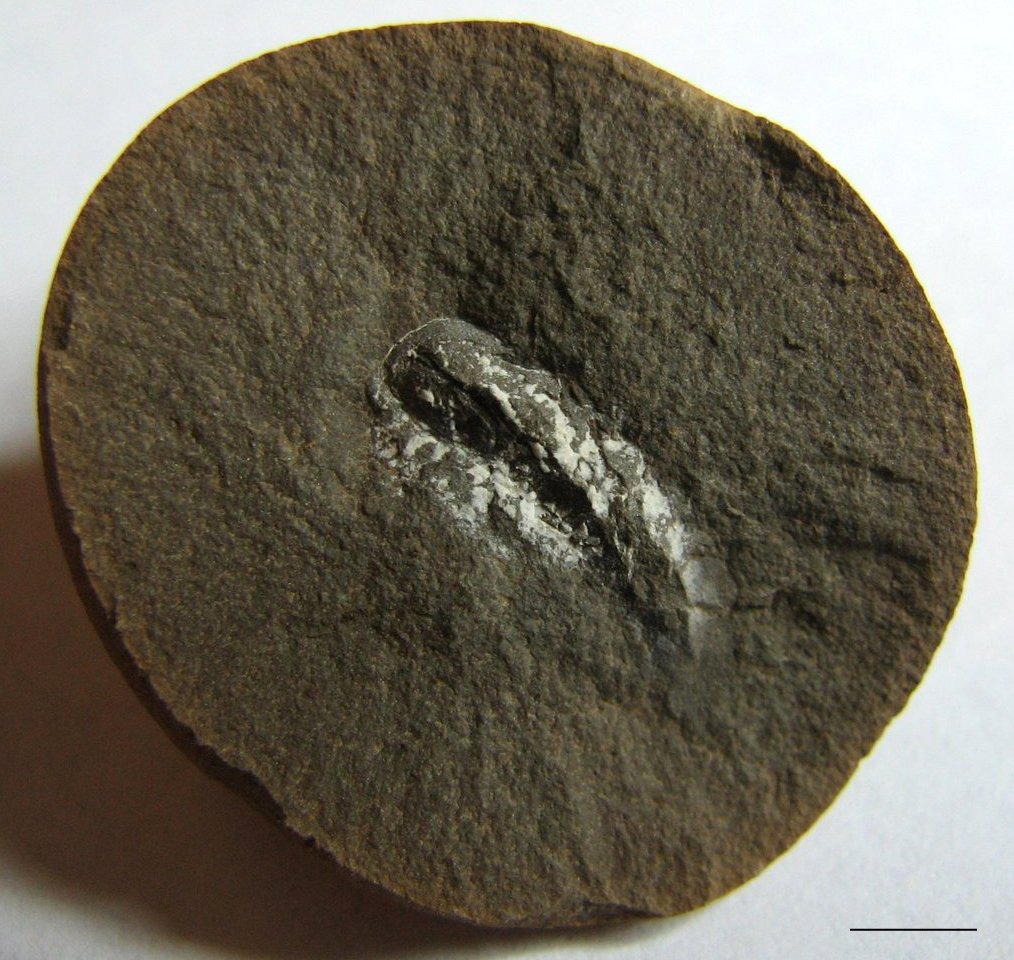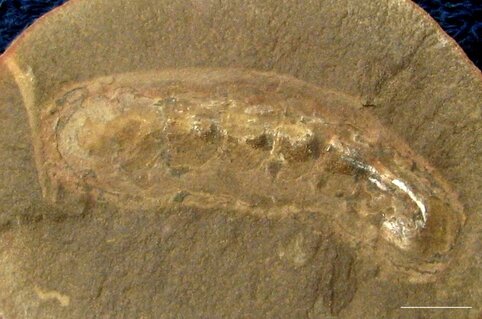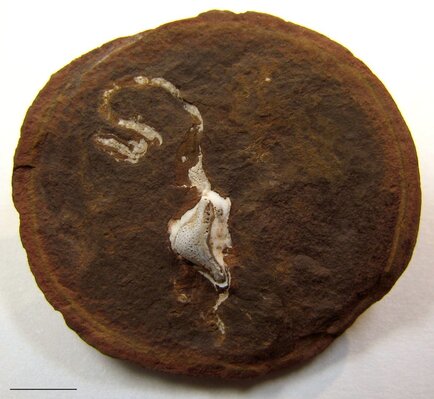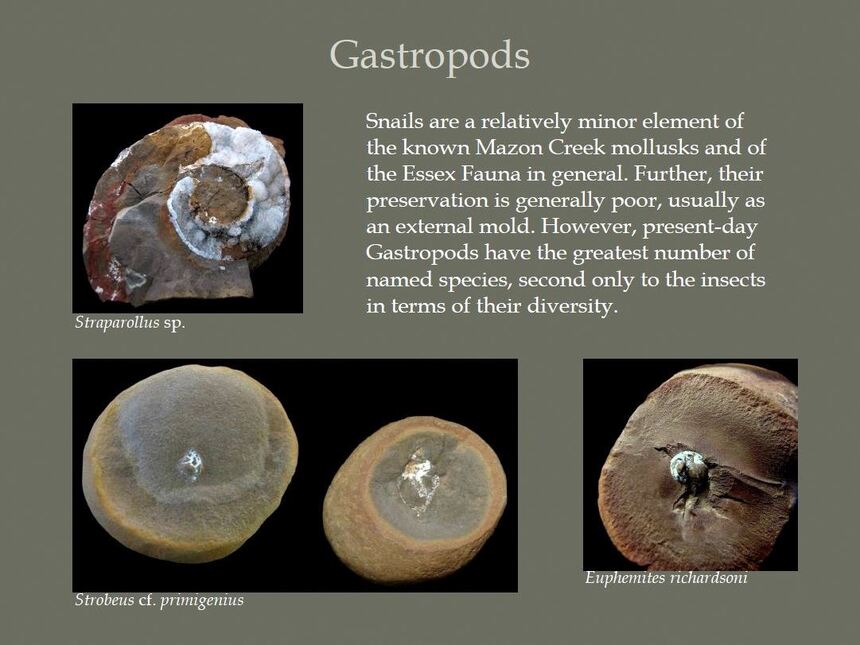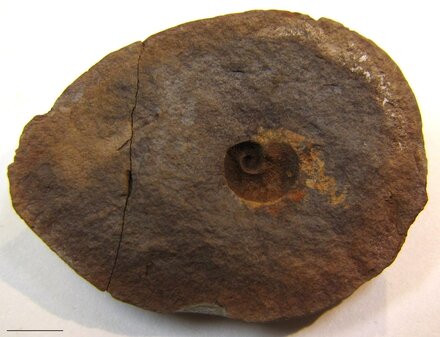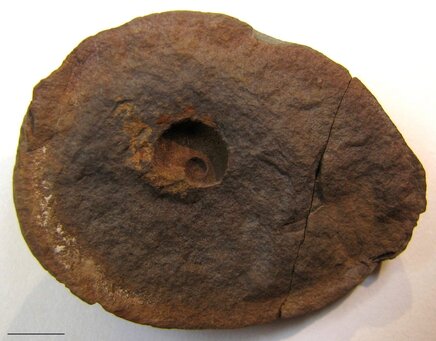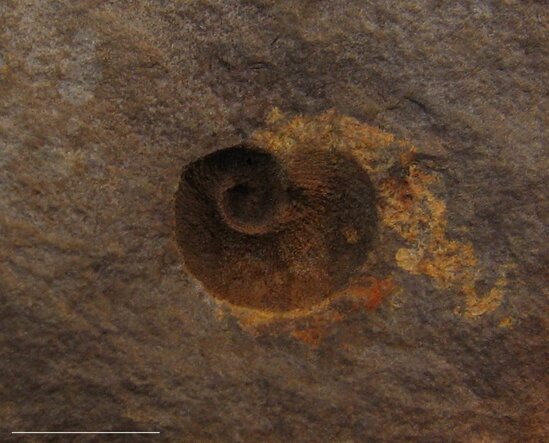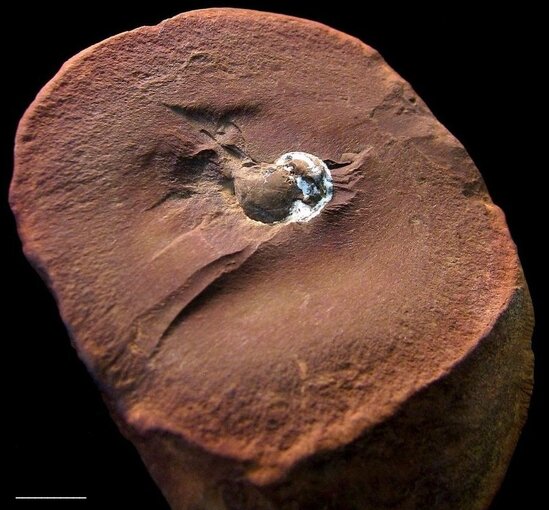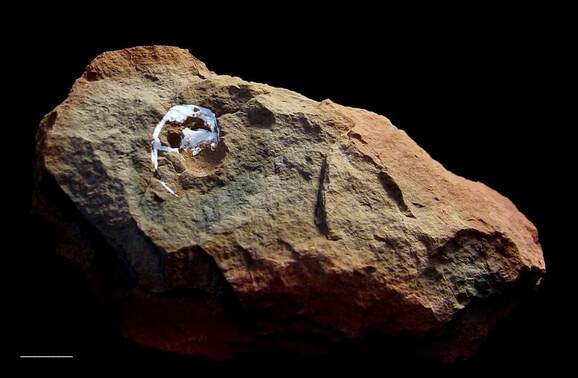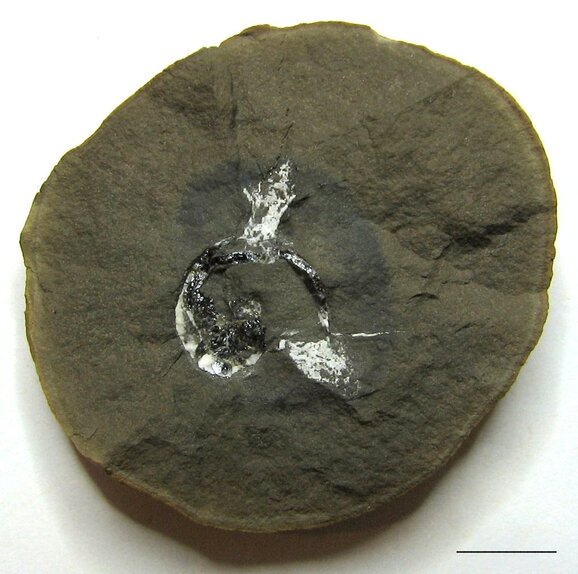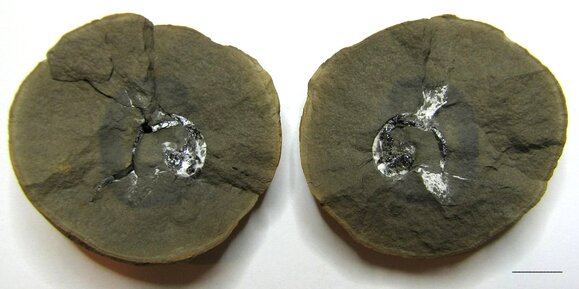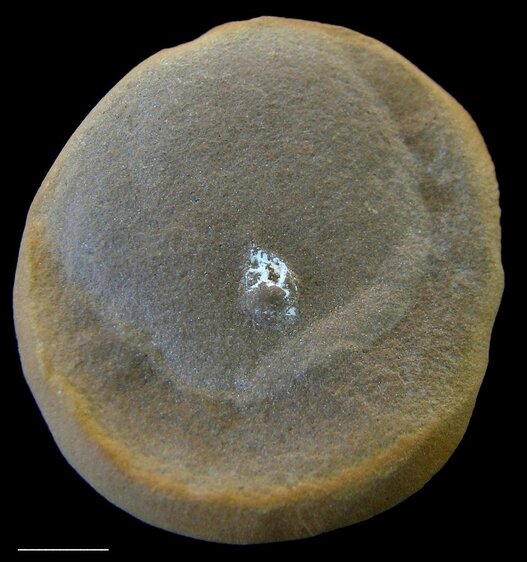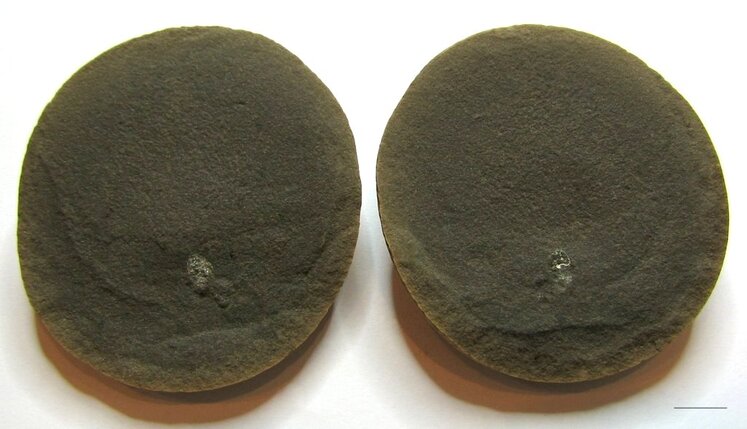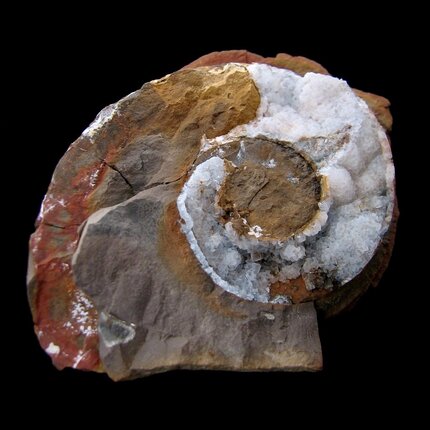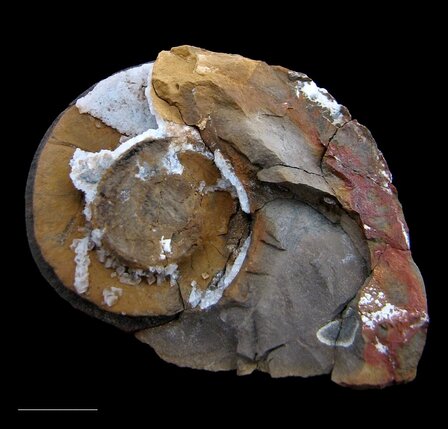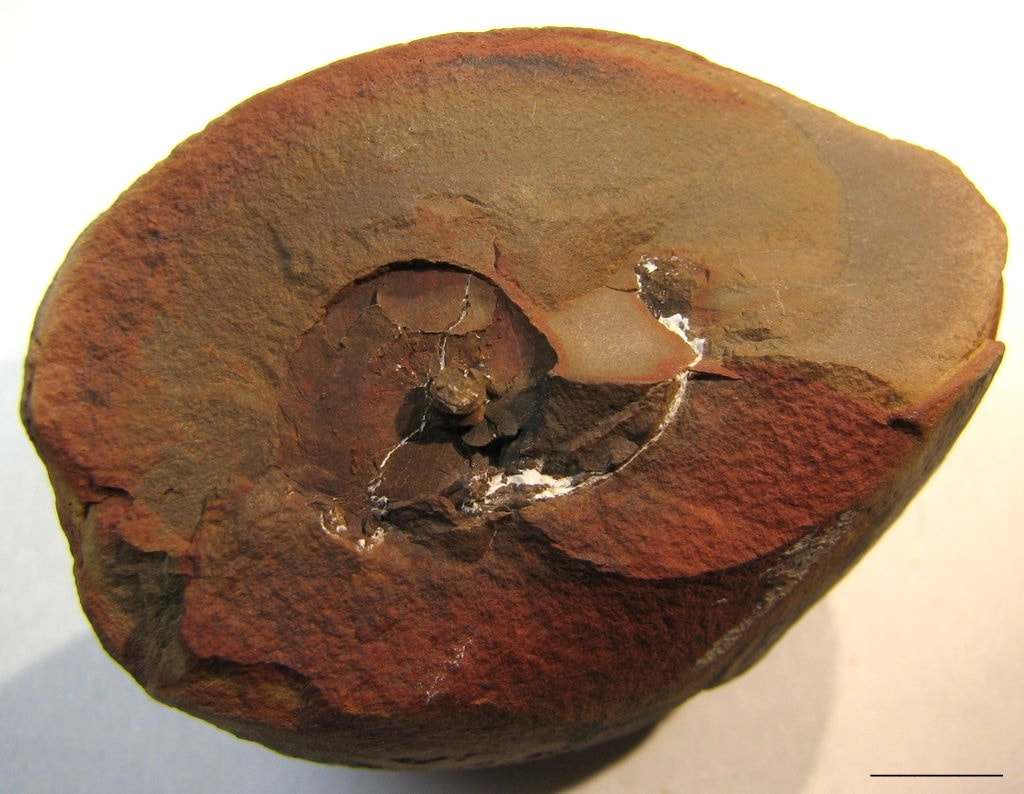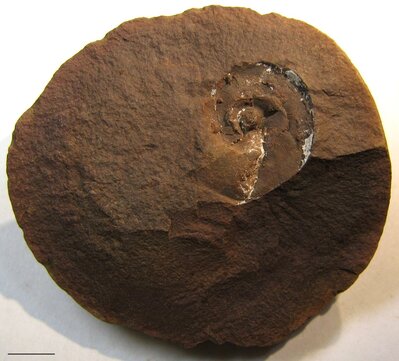Mazon Creek Fossil Fauna
Mollusks
Chitons, Gastropods, and Cephalopods
Chitons
Note: The image above left is of Stenoplax sp., a living Pacific chiton from the San Diego, California, area.
Glaphurochiton concinnus
C.Davis collection (above and below)
J.Wittry collection
Glaphurochiton concinnus, Milwaukee Public Museum - MPM P359689.1 (showing a single valve with soft tissue preservation)
Gastropods
Naticopsis sp.
Naticopsis sp., MIlwaukee Public Museum collection P26292.1 (detail below)
Euphemites richardsoni
Euphemites richardsoni, The Chicago Academy of Sciences collection,
Figure 102.3 The Mazon Creek Fossil Fauna 2012
Figure 102.3 The Mazon Creek Fossil Fauna 2012
A.Young collection - Braceville, Illinois
Euphemites richardsoni, A.Young collection - Braceville, IL
Strobeus cf. primigenius
Strobeus cf. primigenius on Essexela asherae, The Chicago Academy of Sciences collection,
Figures 103.2 and 1674 The Mazon Creek Fossil Fauna 2012
Figures 103.2 and 1674 The Mazon Creek Fossil Fauna 2012
Strobeus cf. primigenius on Essexela asherae, A.Young collection - Pit 11, Braidwood, IL
Straparollus (Euomphalus) sp.
Straparollus (Euomphalus) sp., A.Young collection - Pit 11, Braidwood, IL (positive and negative halves)
Cephalopods
?Wiedeyoceras
?Weideyoceras sp. discoidal cephalopods, Milwaukee Public Museum collection - MPM P28701 and P28702.2
